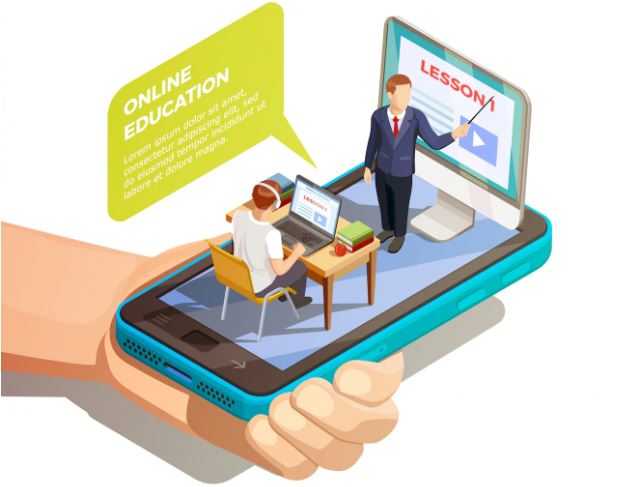Importance Of Mobile Learning In Education

Mobile learning, also known as mLearning, is the utilization of mobile devices to access learning content.
What Is Mobile Learning (mLearning)?
In today's fast-paced digital era, mobile learning has emerged as a powerful educational tool that harnesses the convenience and ubiquity of mobile devices to enhance the learning experience.
With the increasing popularity of smartphones and tablets, mobile learning offers a wide range of advantages that revolutionize how we acquire knowledge and skills.

In this article, we will explore the numerous benefits of mobile learning and how it is transforming the educational landscape.
The key characteristic of mobile learning is its focus on the mobility of the learner, allowing them to choose their own time and place for learning. This flexibility increases engagement and improves knowledge retention.
Key Characteristics of Mobile Learning
mLearning has several key characteristics that make it effective for training dispersed workforces:
1. Microlearning Content
Mobile learning often delivers microlearning content, which consists of 2-5 minute bursts of relevant information. This approach replicates the content consumption patterns we experience daily through social media feeds.
It leverages short-form videos, animations, gamification, quizzes, and other interactive formats to better engage modern learners.
2. Social Learning
Mobile learning incorporates social learning to enhance engagement. It provides features such as forums, newsfeeds, or chat functions that enable learners to ask questions, connect with peers, and share insights.
By replicating online behaviors, social learning fosters a collaborative learning environment.
3. Seamless Access
While not all mLearning platforms offer this feature, seamless access is becoming increasingly important for mobile-based training solutions.
It involves removing login processes through seamless links or embedding content directly into native apps. By reducing friction and barriers, seamless access significantly enhances engagement and makes training more accessible for learners on the go.
Now that we understand what mobile learning is, let's explore whether it is the appropriate training format for your workforce. Consider the following advantages and disadvantages:
Advantages of Mobile Learning
This approach empowers learners to access content whenever and wherever it suits them, enabling learning at the point of need.
Benefit #1: Appeal to Millennials
With 80% of the world's population using smartphones and millennials constituting a significant portion of the workforce, mobile learning capitalizes on their preference for mobile devices.
Being able to reach learners through the device they rely on the most makes mobile learning an effective approach.
Benefit #2: Increased Efficiency
Research indicates that mobile learning improves productivity by up to 43%, with learners completing courses up to 45% faster than those using desktops.
Bite-sized content that can be accessed on the go allows learning to be seamlessly integrated into existing workflows, empowering workers instead of disrupting them.
Additionally, mobile learning is efficient in terms of content creation and dissemination, enabling managers to update and deliver courses to dispersed teams within minutes.
Benefit #3: Enhanced Accessibility
Mobile learning is especially valuable for deskless workers who require 24/7 access to bite-sized training modules on their existing mobile devices.
Embedding learning within a worker app further enhances accessibility, eliminating the need for learners to remember login details and ensuring constant access to necessary information.
Benefit #4: Improved Engagement
By condensing large amounts of information into manageable chunks, mobile learning offers a quick and painless learning experience.
Interactive elements such as quizzes and leaderboards further engage learners and keep them motivated. Learners can easily pick up their phones, complete short lessons, and seamlessly return to their tasks, integrating learning into their workflow and highlighting its immediate value, thereby increasing employee motivation.
Benefit #5: Cost-Effectiveness
Traditional in-person training methods incur various costs, including venue rental, instructor fees, printing materials, travel expenses, and lost productivity. Mobile learning eliminates these costs immediately. Furthermore, the increased engagement associated with mobile training leads to higher completion rates and a higher return on investment (ROI).

Disadvantages of Mobile Learning
While mobile learning has gained significant popularity and transformed the way we acquire knowledge, it is important to acknowledge that like any other technology, it also has its drawbacks
#1: Potential Distraction
If not properly implemented, introducing mobile phones into the workplace can become a distraction. Learners may be interrupted by text messages, notifications, or the allure of social media feeds, potentially hindering productivity.
Choosing a platform that maximizes engagement and interactivity is crucial to maintain learners' attention.
#2: Technology Barriers
Limited access to mobile technology or internet connectivity can pose significant barriers for companies seeking to leverage mobile learning. It is important to assess your teams' current work conditions, available technology, and the type of training that will have the most significant impact before selecting a learning solution.
The deskless workforce, in particular, is often underserved in terms of technology. Investing in the right mobile technology tailored to their needs and progression can enhance productivity and save time and money in the long run.
#3: Expertise
The effectiveness of a training program hinges on its content. Regardless of user-friendly software or interactive gamification features, inappropriate content for your learners will undermine the benefits of mobile learning.
Design your learning content based on your workers' specific needs.
Determine the information necessary for them to perform their jobs effectively and select the format that aligns best with their workflow.
If your team lacks the expertise in this area, consider engaging learning consultancy services to ensure optimal utilization of your mobile learning software and drive tangible business results.
Author Bio
This user has not submitted a user bio yet
Article Comments
No Comments!
At present there are zero comments on this article.
Why not be the first to make a comment?
Similar Articles
Sponsor
Search Articles
Experts Column
Latest Articles
Featured Articles
Most Popular Articles













